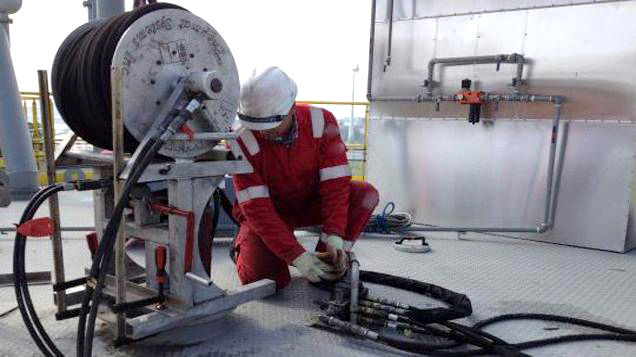SILO CLEANING SAFETY PROFILE INCREASED
- Dickinson Group of Companies

- Oct 19, 2017
- 2 min read
A great number of plant operations personnel and management are knowledgeable of the detrimental effects of clogged up and blocked Silos that result in overall process inefficiencies, material handling problems, storage capacity reduction and product contamination.
In order for every plant to operate at maximum process efficiencies, it is imperative that silos should run free of any blockage or contamination.

Safety around the silo cleaning operations has always been a big concern as traditionally, personnel had to manually scrap off the build up inside the unsafe confined spaces. Technology and equipment improvements have however significantly improved the safety profile of silo cleaning operations by developing methodologies that totally eliminate the need for human entry into the vessels during silo cleaning operations. The cutting-edge equipment is not only improves the safety profile of the operations but is also faster and more efficient. Below is a brief description of two of the technologies.
SILO WHIP SYSTEM
The SiloWhip System is powered by hydraulics and controlled from the top of and outside the silo. The whipping head, which is suspended inside the silo from the top, efficiently clears build-up using an air-driven or hydraulic rotary cutter, with a 360˚ rotation and an operating depth of up to 50m. A range of cutters are used depending on the type of material to be cleaned. Cleared material simply falls to the base of the silo for extraction.
CARDOX SYSTEM
The Cardox System has a variety of different tubes for specific applications. Cardox tubes are filled with liquid carbon dioxide (exactly the same as a fire extinguisher). When energised by the application of a small electrical charge, the chemical heater instantly converts the liquid CO₂ to a gas. This conversion expands the CO₂ volume and builds up pressure inside the tube until it causes the rupture disc at the end of the tube to burst. This releases the CO₂ - now 600 times the original volume – through a special discharge nozzle to create a powerful heaving force at pressures up to 40 000 psi (3000 bar) and breaking the surrounding material.
BENEFITS
Both methods offer the following benefits:
No human-entry into confined spaces, making it 100% safe.
Flammable, explosive, hazardous or toxic product can be safely removed.
No special safety measures required, only standard operating procedures.
Silo cleaning systems that do not cause damage to facilities or the environment.








Comments